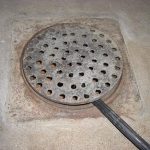If you have ever experienced the frustration of a vacuum brush not spinning, you know how difficult it can be to clean your carpets and floors. This issue can be caused by several factors, including a broken belt, clogged brush roll bearings, or a motor that has overheated.
Whatever the cause, it is important to address the problem as soon as possible, to prevent further damage to your vacuum cleaner and to ensure that it is working efficiently.
When I encountered this problem with my vacuum cleaner, I did some research to find out what could be causing it. I discovered that there are several possible causes, and that each one requires a different solution. For example, if the brush roll bearings are clogged with hair, string, or lint, you may need to remove the brush roll and clean it thoroughly. On the other hand, if the belt is broken or stretched out, you may need to replace it with a new one.
In this article, I will share some of the information I found about why vacuum brushes stop spinning and what you can do to fix the problem. Whether you are a homeowner or a professional cleaner, this guide will help you troubleshoot your vacuum cleaner and get it back in working order. With a little bit of knowledge and some basic tools, you can save yourself time and money by fixing your vacuum cleaner yourself.
Common Causes
When your vacuum brush is not spinning, there could be several reasons why. In this section, I will discuss the most common causes of a non-spinning vacuum brush. These include:
Brush Roll Belt
The brush roll belt is a vital component of your vacuum cleaner. It connects the motor to the brush roll, allowing it to spin. If the belt is worn, stretched, or broken, the brush roll will not spin. To check if the belt is the problem, turn off your vacuum cleaner and unplug it.
Then, remove the brush roll cover and inspect the belt. If it is worn, stretched, or broken, replace it with a new one. Refer to your vacuum cleaner’s manual for instructions on how to replace the belt.
Brush Roll Motor
The brush roll motor is responsible for powering the brush roll. If the motor is not working correctly, the brush roll will not spin. To check if the motor is the problem, turn off your vacuum cleaner and unplug it. Then, remove the brush roll cover and inspect the motor. If the motor is damaged or not functioning correctly, you may need to replace it. Refer to your vacuum cleaner’s manual for instructions on how to replace the motor.
Clogs or Debris
Clogs or debris can also cause your vacuum brush to stop spinning. If there is a clog in the hose or the brush roll, the brush roll will not spin. To check for clogs, turn off your vacuum cleaner and unplug it.
Then, inspect the hose and the brush roll for any clogs or debris. If you find any, remove them. You can use a straightened coat hanger or a long, thin object to remove any clogs.
Additionally, debris can get caught around the brush roll bearings, causing it to stop spinning. Clean off any debris from the brush roll bearings to ensure it can spin freely.
Troubleshooting
Checking the Belt
If the vacuum brush is not spinning, the first thing to check is the belt. A broken or loose belt can cause the brush to stop spinning. To check the belt, I need to unplug the vacuum and remove the bottom plate. Then, I can check the condition of the belt. If the belt is broken, I need to replace it. If the belt is loose, I need to adjust it. Refer to the vacuum manual for instructions on how to adjust or replace the belt.
Inspecting the Brush Roll Motor
If the belt is not the issue, the next thing to check is the brush roll motor. A faulty motor can cause the brush to stop spinning. To check the motor, I need to unplug the vacuum and remove the bottom plate. Then, I can check the condition of the motor. If the motor is faulty, I need to replace it. Refer to the vacuum manual for instructions on how to replace the motor.
Clearing Clogs or Debris
If the belt and motor are not the issue, the problem may be due to clogs or debris in the brush roll. To check for clogs or debris, I need to unplug the vacuum and remove the bottom plate.
Then, I can check the brush roll for any hair, string, or debris that may be causing it to stop spinning. If there is a clog or debris, I need to clear it out. Refer to the vacuum manual for instructions on how to remove clogs or debris from the brush roll.
In conclusion, troubleshooting a vacuum brush that is not spinning requires checking the belt, inspecting the brush roll motor, and clearing clogs or debris. By following these steps, I can identify the issue and fix it quickly and efficiently.
Preventative Maintenance
If you want to ensure that your vacuum brush keeps spinning, regular maintenance is key. Here are some preventative steps you can take:
Regular Cleaning
One of the most important things you can do to keep your vacuum brush spinning is to clean it regularly. Over time, hair, dirt, and debris can build up in the brush roll bearings, causing the brush to stick and eventually stop spinning altogether. To prevent this from happening, I make sure to clean my vacuum brush after every use. Here’s how:
- Unplug the vacuum and remove the brush roll
- Use scissors or a seam ripper to cut away any hair or string that is wrapped around the brush roll
- Use a stiff brush to remove any dirt or debris that is stuck in the brush roll bearings
- Wipe down the brush roll with a damp cloth to remove any remaining dirt or debris
- Reinstall the brush roll and plug in the vacuum to test that it is spinning properly
Replacing Parts
Even with regular cleaning, some vacuum parts will eventually wear out and need to be replaced. If you notice that your vacuum brush is not spinning properly, it may be time to replace the brush roll or belt. Here’s how:
| Part | How to Replace |
|---|---|
| Brush Roll | Unplug the vacuum and remove the brush roll. Install the new brush roll by aligning it with the bearings and pushing it into place. Reinstall the cover and plug in the vacuum to test that it is spinning properly. |
| Belt | Unplug the vacuum and remove the cover. Locate the belt and remove it from the motor shaft and brush roll. Install the new belt by wrapping it around the motor shaft and brush roll. Reinstall the cover and plug in the vacuum to test that it is spinning properly. |
By following these preventative maintenance steps, you can help ensure that your vacuum brush keeps spinning properly and your floors stay clean.
Conclusion
In conclusion, dealing with a vacuum brush that is not spinning can be a frustrating experience. However, with the right knowledge and tools, it is possible to fix the problem quickly and easily.
Firstly, it is important to identify the root cause of the issue, which could be a broken belt, clogged roller, debris build-up, or a problem with the motor.
Once the cause of the problem has been identified, it is necessary to take the appropriate steps to fix it. If the belt is broken, it can be easily replaced by following the manufacturer’s instructions. Cleaning the roller and removing any debris build-up can also help to get the brush spinning again. In some cases, a problem with the motor may require professional assistance.
It is important to note that regular maintenance of your vacuum cleaner can help prevent issues with the brush not spinning. This includes cleaning the roller and removing any debris after each use, as well as checking and replacing the belt when necessary.
Overall, dealing with a vacuum brush that is not spinning can be frustrating, but it is a problem that can be easily fixed with the right knowledge and tools.
By following the steps outlined in this article, you can ensure that your vacuum cleaner is always working at its best, keeping your home clean and tidy.




